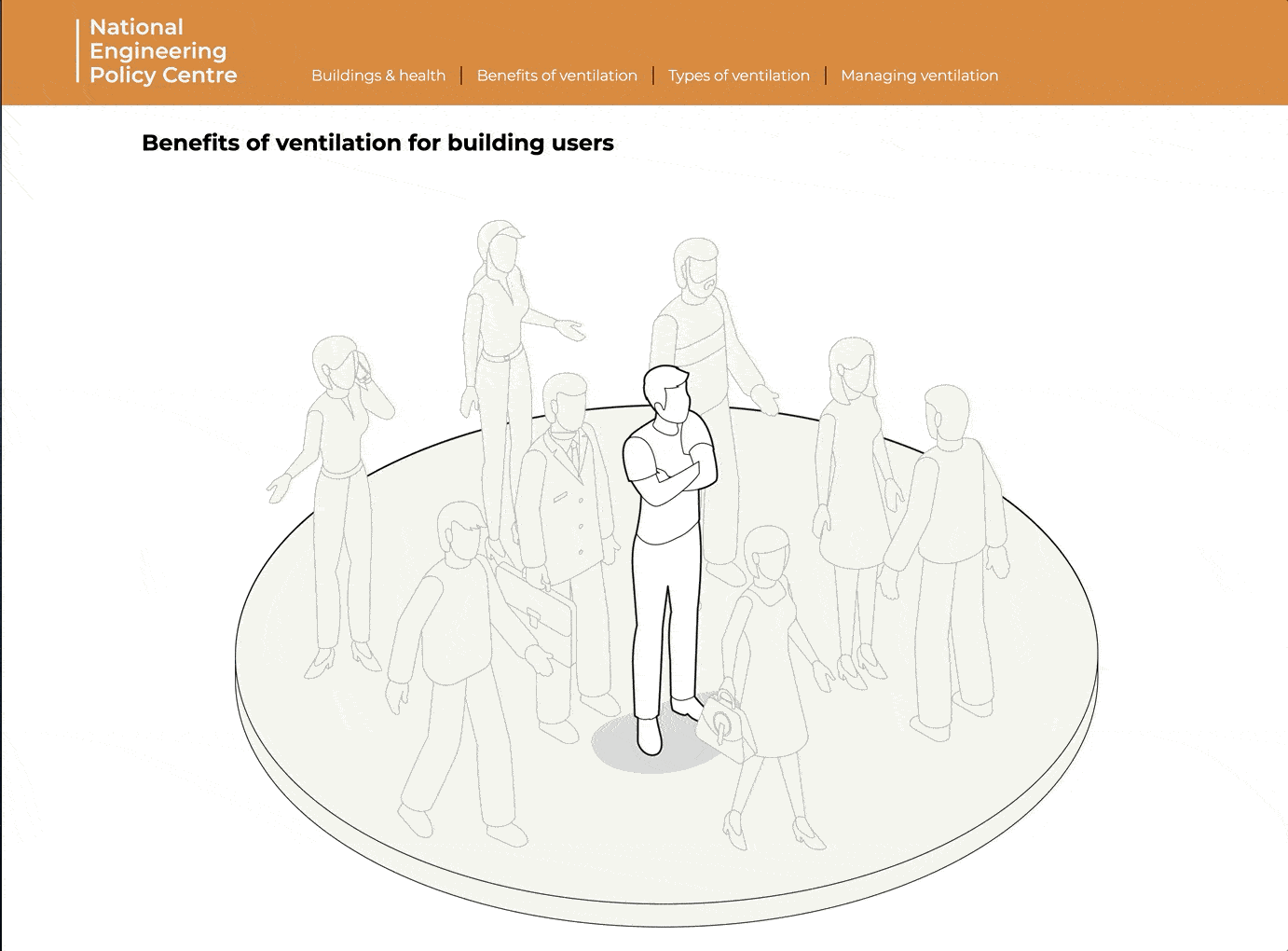Interactive Storytelling Royal Academy of Engineering

Challenge
Post-pandemic, we’re more conscious than ever of the impact of clean air on our physical and mental health. But as many of us return to the traditional office environment, what role can ventilation in our buildings play, and what is the science behind it?
The Royal Academy of Engineering (RAEng) and the National Engineering Policy Centre wanted to explore the effects of good and bad ventilation in our buildings, as well as improvements that building owners, managers and users can make.
RAEng is the UK’s national academy of engineering. Its remit includes providing progressive leadership for the sector, as well as independent expert advice to government in the UK and beyond. Its ultimate goal is to help build a sustainable society and inclusive economy through engineering and technology.
RAEng approached us to create a piece of data-led storytelling to boost awareness of the importance of good ventilation in buildings – and conscious action-taking as a result. RAEng is one of 42 partners in the UK’s National Engineering Policy Centre (NEPC), so they wanted something that would convey their research-based messaging at a country-wide scale.
On average, humans spend 80% of their time indoors. The built environment is a complex topic, so RAEng wanted to produce a story that cut to the heart of the matter for a wider audience without sacrificing their focus on scientific precision.
In response, we brought together a team of dataviz professionals that matched RAEng’s brief to tell their story through visual data:
– Razvan Zamfira – a skilled information designer from our global network with a technical background in architecture and urban development
– David Bumbeishvili – a core member of the infogr8 team with expertise in creating custom scrollytelling content

“As a trained architect, I was thrilled to work on a project that focused on improving the quality of interior spaces. The prospect of exploring methods of utilising 3D spaces and visualising data on top of them was particularly enticing.”
– Razvan Zamfira, data designer
Solution
We custom-built an interactive scrollytelling story to spotlight key considerations for a variety of audiences
Our solution – Ventilation matters – explores why effective ventilation indoors is so crucial to the health and wellbeing of building occupants. It also offers a visual yet detailed account of the steps that can be taken in various settings to improve indoor air quality. For example, viewers can explore suggested actions and existing guidance by user type or by the forms of ventilation facilities available.
The storytelling explainer is underpinned by the NEPC’s infection resilient environments workstream, which considers the engineering controls that can be used in the built environment and public transport to minimise transmission risks.
We didn’t just take the existing research and make it pretty. To ensure alignment throughout, we facilitated discussions with RAEng’s working group of academic professionals and shared iterative feedback as the story took shape. We also helped to refine the messaging to make sure that the piece never became too dense from a technical standpoint.

“When working on a data visualisation project, one of the most significant obstacles is how to present complex, technical information in a way that is easy to understand and visually appealing to your audience. The challenge lies in finding a balance between simplifying the information and retaining its value.
In our specific case, we faced the additional challenge of representing a diverse range of elements in a fixed interior environment using 3D objects. This involved working with objects of varying sizes, from 10cm items to entire HVAC building systems, as well as abstract concepts. It was like building a modern-day version of 17th-century ‘cabinets of curiosities’, and that made it a very engaging intellectual challenge.”
– Razvan Zamfira, data designer
The resulting scrollytelling story combines animated features and interactive visuals with a high rating for accessibility. Rather than a static infographic or printed poster, RAEng now have a future-proofed solution that can absorb new research evidence on the topic as it becomes available.

“We wanted to create an interactive story as we knew this was the better solution for showing technical concepts visually and making the complex simple. This meant we were able to tell the story properly in order to inform and engage audiences, and most importantly to frame the interactive module around actions. RAEng can now share so much more insight with the world, reaching beyond purely engineering settings.”
– Josephine Brown, infogr8 project manager



